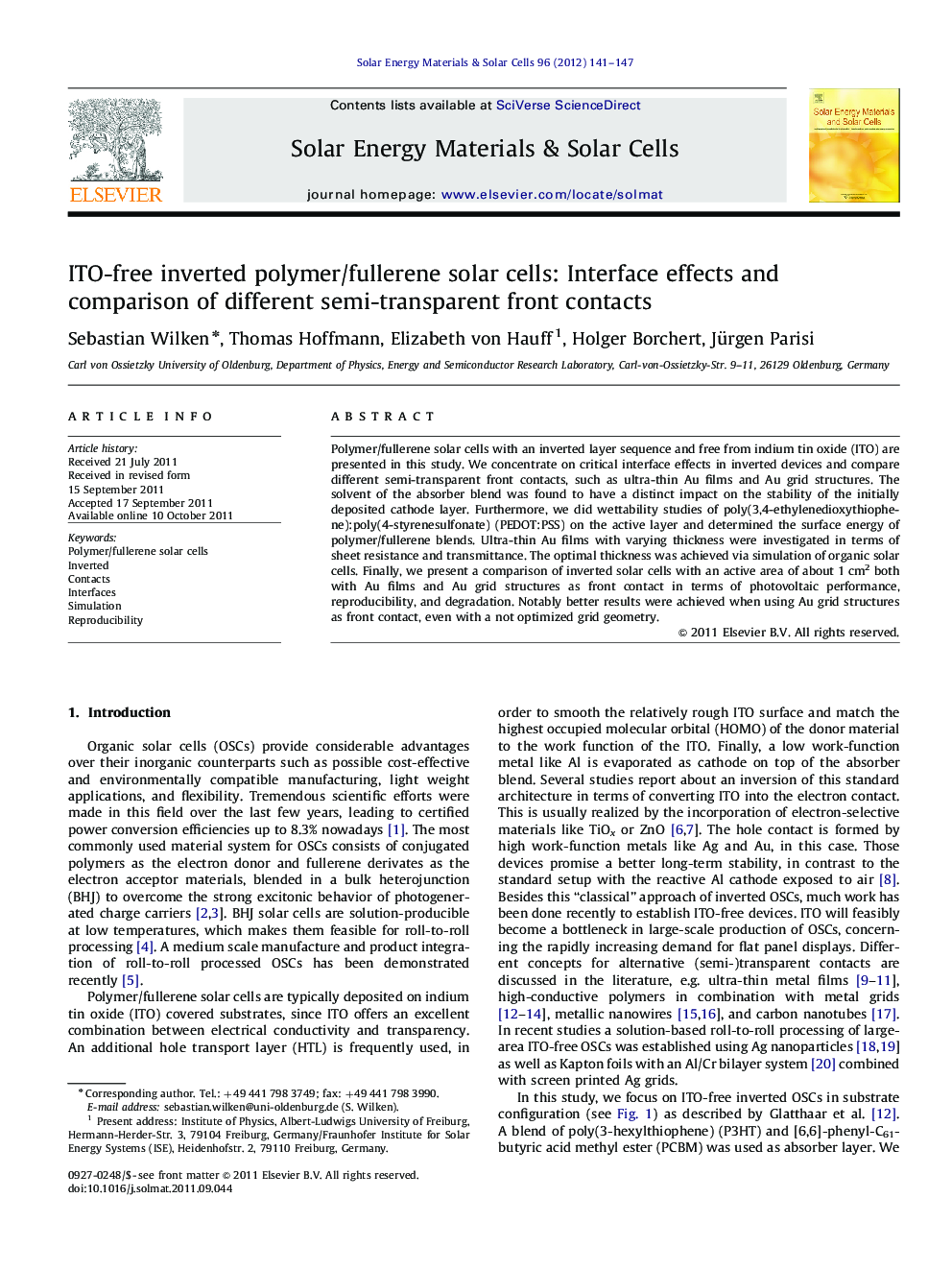| Article ID | Journal | Published Year | Pages | File Type |
|---|---|---|---|---|
| 79478 | Solar Energy Materials and Solar Cells | 2012 | 7 Pages |
Polymer/fullerene solar cells with an inverted layer sequence and free from indium tin oxide (ITO) are presented in this study. We concentrate on critical interface effects in inverted devices and compare different semi-transparent front contacts, such as ultra-thin Au films and Au grid structures. The solvent of the absorber blend was found to have a distinct impact on the stability of the initially deposited cathode layer. Furthermore, we did wettability studies of poly(3,4-ethylenedioxythiophene):poly(4-styrenesulfonate) (PEDOT:PSS) on the active layer and determined the surface energy of polymer/fullerene blends. Ultra-thin Au films with varying thickness were investigated in terms of sheet resistance and transmittance. The optimal thickness was achieved via simulation of organic solar cells. Finally, we present a comparison of inverted solar cells with an active area of about 1 cm2 both with Au films and Au grid structures as front contact in terms of photovoltaic performance, reproducibility, and degradation. Notably better results were achieved when using Au grid structures as front contact, even with a not optimized grid geometry.
► An impact of the solvent of the absorber blend on cathode stability was found. ► Estimation of the surface energy of polymer/fullerene blends. ► Comparison of Au films and Au grids as front contacts in inverted devices. ► Optimal Au film thickness was obtained via solar cell simulation. ► Notably better results were achieved when using Au grids.
